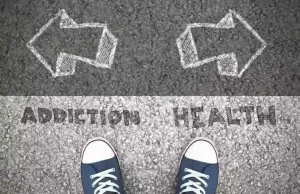Alcoholic Ketoacidosis: Causes, Symptoms, and Diagnosis

Alcoholic ketoacidosis is the buildup of ketones in the blood due to alcohol use. Ketones are a type of acid that form when the body breaks down fat for energy. Diabetes-related ketoacidosis (DKA) is one of the scariest complications of Type 1 diabetes.
- We here describe the development of a dual photo/Co catalytic system that enables the efficient and selective synthesis of ketones from primary alcohols and alkenes under mild conditions.
- Given the frequency with which the condition is seen in other countries, the possibility exists that many cases may be unrecognised and misdiagnosed in UK EDs.
- In conclusion, this dual photo/Co catalysis enables selective manipulation of the reactivity of ketyl radicals, which allows the assembly of ketone functionality from broadly available primary alcohols and alkenes.
- Other electrolyte abnormalities concomitantly present with alcohol abuse and poor oral intake include hypomagnesemia and hypophosphatemia.
- 5l could be reduced to 1,4-diol (7) in quantitative yield and subsequently cyclized to 2-phenethyltetrahydrofuran (8) in 83% yield45.
- Even though they sound alike, diabetes-related ketoacidosis and ketosis are two different things.
Critical Care

Other symptoms include fatigue, nausea, and a fruity odor on the breath. Toxicity from methanol or ethylene glycol is an important differential diagnosis. Toxic metabolites of both substances result in severe metabolic acidosis with wide anion gap and wide osmolal gap.18 Neither, however, causes ketosis.
Symptoms of Alcoholic Ketoacidosis
The next important step in the management of AKA is to give isotonic fluid resuscitation. Dextrose is required to break the cycle of ketogenesis and increase insulin secretion. The dextrose will also increase glycogen stores and diminish counterregulatory hormone levels. It is essential to administer thiamine before any glucose dka and alcohol administration to avoid Wernicke’s encephalopathy preci[itation. If severe hypokalemia is present dextrose containing fluids can be held until potassium levels are normalized. Other electrolyte abnormalities concomitantly present with alcohol abuse and poor oral intake include hypomagnesemia and hypophosphatemia.
Evaluation and management of the critically ill adult with diabetic ketoacidosis
- Careful analysis of the template reaction with 1a and 2a showed that n-butyl propionate (2a’) was produced in 68% yield, which indicates the excess alkene functioning as the hydrogen acceptor (Fig. 3C, 3).
- This is a common presentation in the emergency department (ED) and requires targeted therapies.
- Administration of insulin alone in AKA leads to rapid fall in blood sugar and confirms the diagnosis of AKA, while DKA requires a substantial amount of insulin without dextrose initially.
- But it can happen after an episode of binge drinking in people who do not chronically abuse alcohol.
- This goal can usually be achieved through the administration of dextrose and saline solutions (see Treatment).
- An anion gap metabolic acidosis with ketosis and electrolyte abnormalities are usually present on laboratory evaluation.
If untreated, severe cases of acidosis can cause shock or become fatal. Strategies to prevent metabolic acidosis include managing excess weight, limiting alcohol, ensuring you’re hydrated, and treating diabetes. For measuring ketones, a person should check their levels any time they are sick or if their blood sugar readings are 240 milligrams per deciliter (mg/dL) or above.

What are the symptoms of alcoholic ketoacidosis?
The underlying pathophysiology is related to poor glycogen stores and elevated nicotinamide adenine dinucleotide and hydrogen. This results in metabolic acidosis with elevated beta-hydroxybutyrate levels. Patients with AKA most commonly present with a history of alcohol use (acute or chronic), poor oral intake, gastrointestinal symptoms, and ketoacidosis on laboratory assessment. Patients are generally dehydrated, and serum glucose can be low, normal, or mildly elevated.
This is a common presentation in the emergency department (ED) and requires targeted therapies. This drop in blood sugar causes your body to decrease the amount of insulin it produces. Your cells need insulin to use the glucose in your blood for energy.
General procedure for ketone synthesis from primary alcohols and alkenes
This condition had been brought on by a lung infection, a kidney injury and, potentially, heavy drinking, as the man had a history of alcohol dependence. The advancement of transition metal catalysis has enabled the catalytic activation of primary alcohols through dehydrogenation to be integrated into ketone synthesis in a one-step manner9,10,11,12,13,14,15,16,17,18,19. Among these methods, assembling ketone from primary alcohols and alkenes represents the most straightforward and cost-effective approach, given the ready availability of both starting materials (Fig. 1B)20,21,22,23,24,25. In these processes, a metal hydride complex is the key catalytic species merging the dehydrogenation of alcohol and alkene hydroacylation via an aldehyde intermediate. Consequently, branched adducts from electron-rich alkenes are dominant unless directing groups are installed22,23. Nevertheless, the majority of existing methods require high loading of precious metal catalysts and elevated temperatures, which narrows the substrate scopes and induces side reactions.
- How severe the alcohol use is, and the presence of liver disease or other problems, may also affect the outlook.
- Untreated, diabetic ketoacidosis can lead to loss of consciousness and, eventually, death.
- There are many ways to prevent diabetic ketoacidosis and other diabetes complications.
- The best thing you can do is get help as soon as possible to prevent it from becoming severe.
- When you don’t have enough insulin, the sugars you eat can’t get out of your blood and into your cells.
- Healthcare providers diagnose the condition using physical exams, blood tests, and other procedures.
Ketone acidosis of nondiabetic adults

The accompanying lack of alcohol in the patient’s body and the fact that for some time, the only source of calories that a patient has is ethanol both contribute to the clinical syndrome that we see. Your body makes ketones, but not enough to make your blood too acidic, so ketosis isn’t dangerous. With ketosis, your body has enough insulin and it’s working properly. Go to the emergency room if your blood sugar is 300 mg/dL or more and won’t go down or if you have any symptoms of DKA, including frequent throwing up, tiredness, or difficulty breathing. Each of these situations increases the amount of acid in the system.
These methods generally require high reaction temperatures and a high loading of precious metal catalysts and are predominantly effective for branch-selective reactions with electron-rich alkenes. Herein, we designed a dual photo/cobalt-catalytic method to manipulate the reactivity of nucleophilic ketyl radicals for the synthesis of ketones from primary alcohols and alkenes in complementary reactivity and selectivity. This protocol exhibits exceptional scope across both primary alcohols and alkenes with high chemo- and regio-selectivity under mild reaction conditions. Mechanism investigations reveal the essential role of cobalt catalysis in enabling efficient catalysis and broad substrate scope. Lactic acidosis occurs when ethanol metabolism results in a high hepatic NADH/NAD ratio, diverting pyruvate metabolism towards lactate and inhibiting gluconeogenesis. In peripheral tissues, where NADH levels are lower, this lactate may be converted to pyruvate for metabolic needs.
Treatment for alcohol addiction is also necessary to prevent a relapse of alcoholic ketoacidosis. Your doctor and other medical professionals will watch you for symptoms of withdrawal. Consider purchasing ketone test strips from your local drug store. If you notice any of the symptoms of DKA or have a blood sugar reading higher than 240 mg/dL, you can use these to determine the level of ketones in your urine.
